Guernsey Water supply 'safe' from firefighting foam
- Published
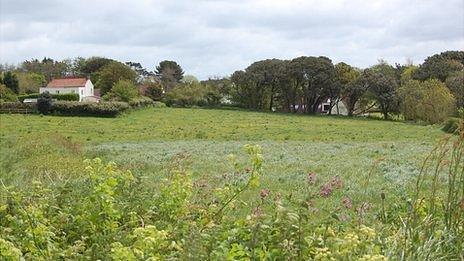
The soil will be removed from a 900 sq m (9700 sq ft) area to a 2m (7ft) depth
A field where a cargo plane crashed and burst into flames, is set to be dug up to stop hazardous chemicals entering Guernsey's water supply.
Foam used by firefighters to tackle the blaze when the plane from Luton came down, in 1999, had unsafe levels of acid in it, investigators found.
Guernsey Water, said regular tests were carried out in the years since and no contaminated water entered the supply.
Andrew Redhead, of the firm, said: "There is no danger to the public."
Tests carried out at the site showed Perfluorooctane sulfonic acid (PFOS), which was previously used in firefighting foam, had been found to be 10 times the safe limit, Mr Redhead said.
'Tested very rigorously'
He said: "This particular field drains down to Petit Bot and Petit Bot is a pumping station where we're able to take water quality samples.
"If the water there isn't of a satisfactory standard then we don't pump it up and over into the reservoir.
"We make sure the water quality is tested very rigorously throughout the island and I can assure you the water is perfectly safe to drink."
A Public Services Department spokesman said as PFOS was being detected in ground water they wanted to remove the soil "to protect supplies".
About 14,000 tonnes of soil, contaminated by the same chemical, at the island's airport was removed last year and placed in a sealed container in a raised grass bund outside the airport entrance as part of an £80m airfield refurbishment.
The soil from the field, which covers an area of about 60m (200ft) by 30m (100ft) to a depth of 2m (7ft), is due to be put in a smaller container at the western end of the bund.
The Public Services Department is currently looking for a company to apply to carry out the work, which it hopes will be carried out in the late summer or early autumn during drier weather.
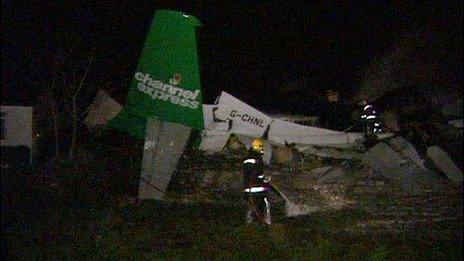
The twin-engined Fokker F-27 was carrying 3 tonnes of newspapers to the island
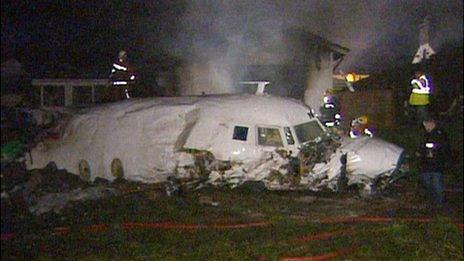
The plane left Luton at 1600 after the flight had been delayed in the morning
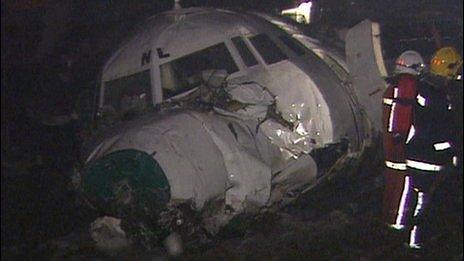
Eye witnesses said it spiralled down and hit the house before it caught fire
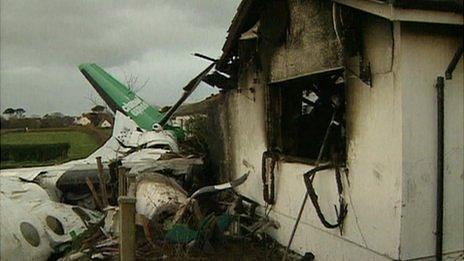
The fire spread to the nearby house before firefighters brought it under control
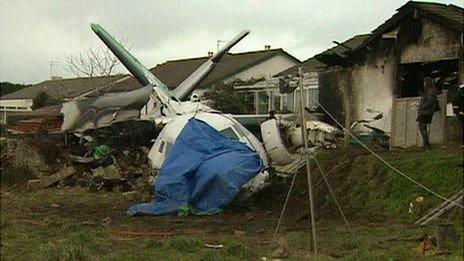
Both crew members died in the crash, which was blamed on incorrect loading

The F-27 missed a garage by 30 yards and a row of house by just a few foot
The chemical entered the soil when the airport fire and rescue service controlled a blaze caused by a cargo plane crashing into the field on 12 January 1999.
The Channel Express Fokker F-27 had flown in from Luton to deliver a total of three tonnes of newspapers to the island and was on its final approach when it suddenly pitched, stalled, span and hit the roof of a nearby house before crashing into the field.
Two crew members on board, Captain Martin Bulgin, 36, from Dorset and First Officer Ian Rhodes, 41, who lived in Swindon, died in the crash.
Reports at the time said it was "miraculous" no one on the ground was hurt as the owners of the house hit by the plane were in another part of the building.
A row of houses were also only several feet from the crash site.
The Air Accidents Investigation Branch report, released in April 2000, concluded the crash was caused because of incorrect storage of the newspapers on board, affecting the twin-engined plane's weight distribution.
- Published16 March 2012
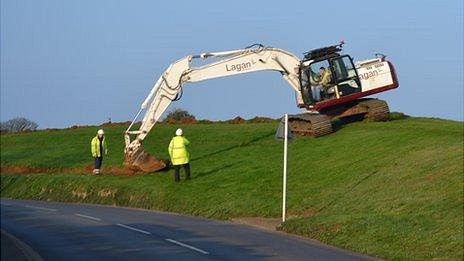
- Published6 February 2012
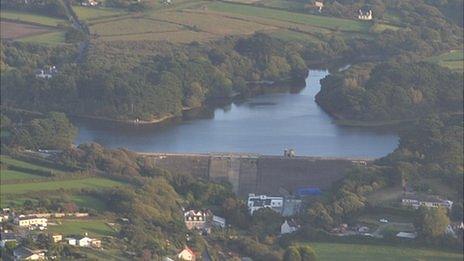
- Published17 November 2011
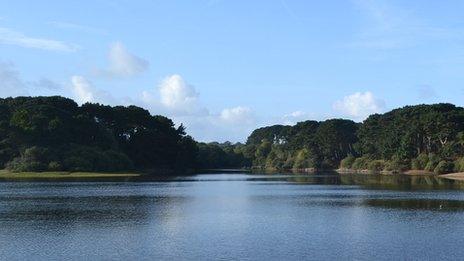
- Published15 March 2011